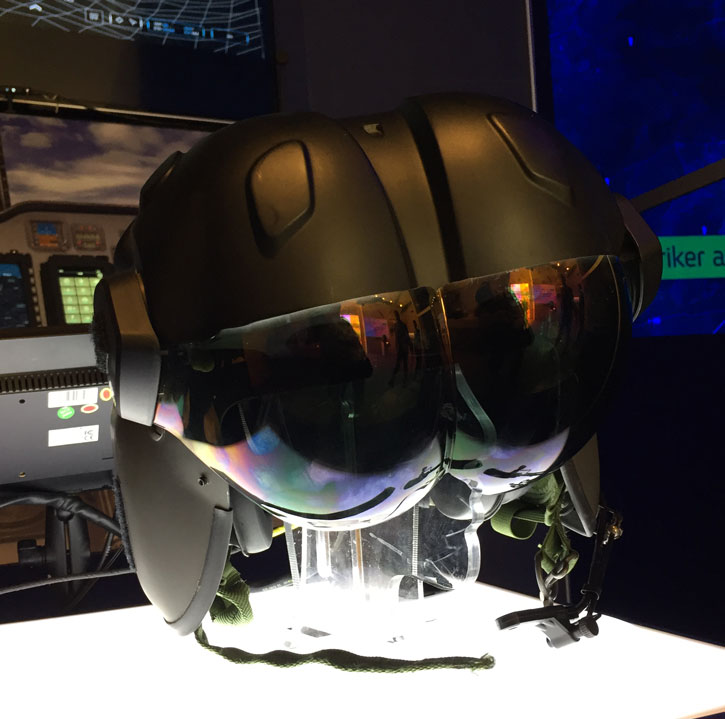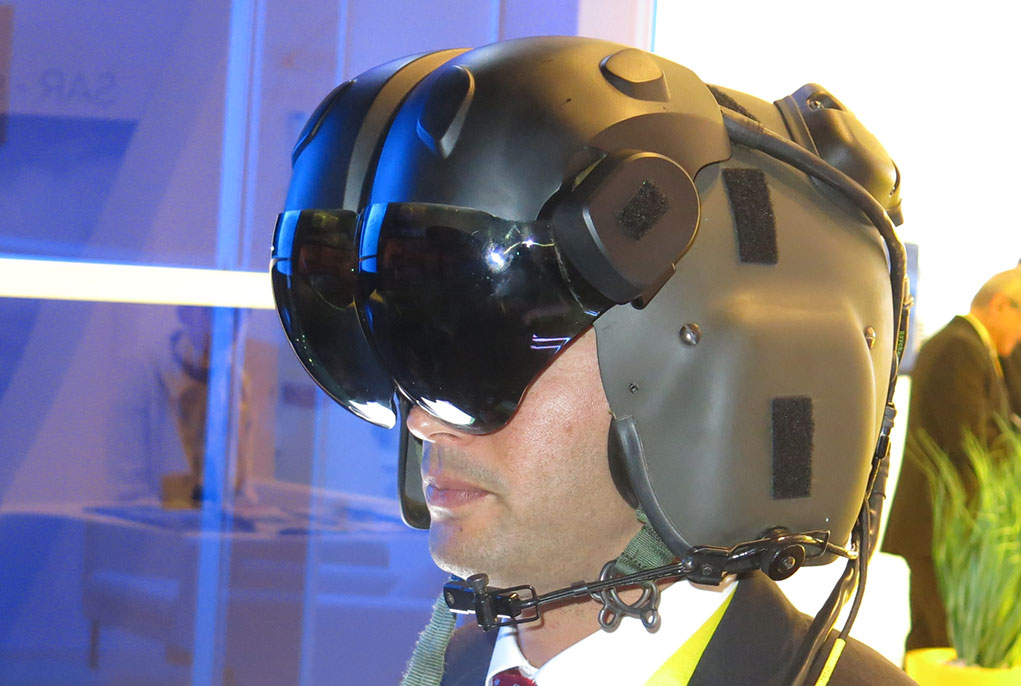Defense-Update had the opportunity to test Elbit Systems’ brand new X-Sight helmet display system at the company’s closed exhibit at the Paris Airshow. X-Sight brings the F-35 display, and image fusion technology to cockpits of future helicopters, such as Future Attack & Reconnaissance Aircraft (FARA) and Future Vertical Lift (FVL), both families are expected to appear in the US and European market in the next decade.

Until now the company produced integrated helmet displays for fighter pilots, but helicopter pilots had to settle for Helmet Mounted Systems (HMS). These systems use display generators projecting their pictures on beam splitters that superimpose the generated image on the world view. For night operation, the system incorporates an additional, binocular Aviator Night Vision System (ANVIS). This combination enables pilots to maneuver and fly ‘heads out,’ fast and low, in the day and at night.
The new X-Sight helmet delivers the F-35 display technology (the developers argue it is even better) to the helicopter cockpit. It has two curved visors, offering a combined field of view of 60 degrees with an overlapping center area. It uses optical, magnetic and inertial trackers to refine line of sight measurement, giving smooth tracking and visualization of obstacles, or targets even through sharp movement. It combines day and night displays with 360 degrees view of Pilot Visual Systems (PVS) or Pilotage distributed aperture Sensors (PDAS), offering ultimate viewability for the pilot. The team calls this capability ‘SuperVision’ that provides a brand new ‘connected avionics’ capability, which we will cover in a later post.
Unlike current helmets that are heavily loaded to the front (by the ANVIS), and must be balanced with extra weight in the back, X-Sight is balanced to the center, The night vision is provided by an integral camera delivering seamless visibility at the line of sight, added with a wider field from additional sensors such as Britenight or PDAS. Additionally, the synthetic world view (of terrain maps and known obstacles) enhances situational awareness, even at degraded or low visibility.
As the system is connected to the aircraft’s 360 vision system, it continuously tracks the landscape extracting potential obstacles such as electrical lines and other distinctive obstacles without prior mapping. The system also warns the pilot and plots recommended a route to avoid the risk. With information layers anchored to the relevant location and perspective, X-Sight depicts a rich situational picture that assists pilots on their missions under all conditions, even in degraded visibility.
The privately funded development leverages Elbit Systems’ experience gained through numerous development programs the Israeli company have done in recent years and secures its position with future rotorcraft programs. A first prototype has been developed and is currently being tested, toward further refinements and adaptations to future applications.




















